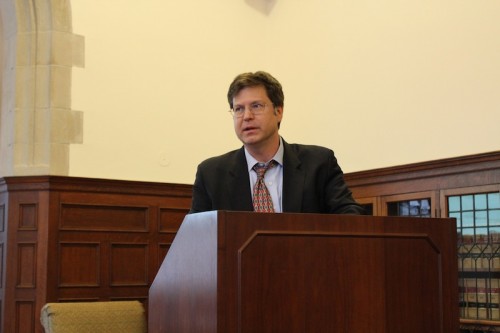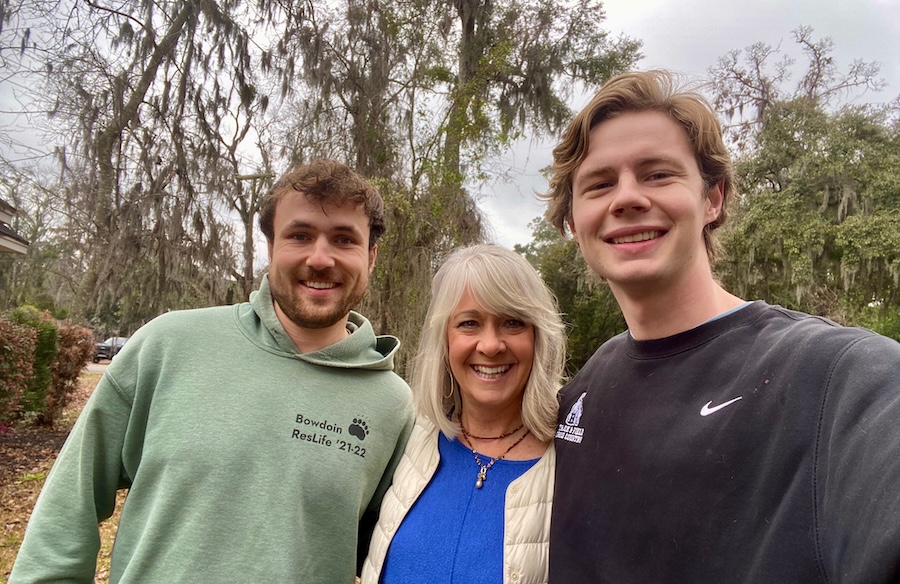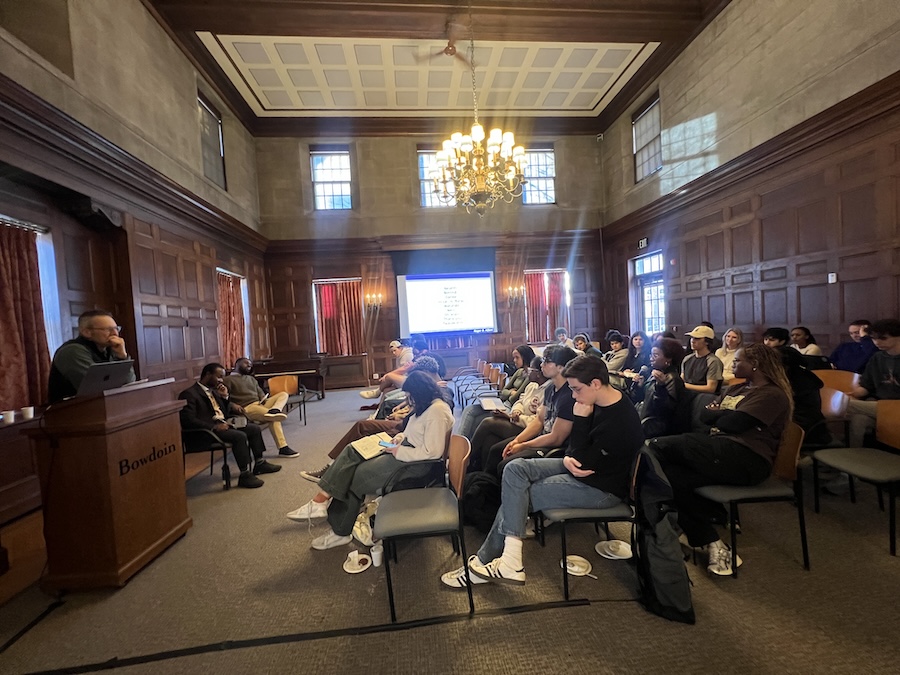Historian Andrew Robarts ’90 Gives Bowdoin Talk: 'Merchants, Migrants and Microbes'
By Bowdoin
Andrew Robarts ’90 recently visited Bowdoin to give a lecture titled “Merchants, Migrants and Microbes: Ottoman-Russian Relations in the 19th and 19th Centuries,” also the working title of his current manuscript. Robarts, who just received a tenure track position in Rhode Island School of Design’s history department, expressed his excitement to give his lecture at Bowdoin College in the Shannon Room where he once learned computer science as a undergraduate student. His talk was sponsored by the history department.
Roberts’ current specialization is the comparative history of the Ottoman and Russian Empires with a particular focus on disease, public health, quarantines and anti-disease legislation. He is currently developing a project on environment, space, and human mobility in the early-modern Ottoman Empire.
Using excerpts from his book, Robarts offered a balanced understanding of the relationship between the Ottoman and Russian empires by going beyond an examination of the geopolitical and ideological tensions often highlighted in history. “If you dig a little deeper, you will see significant moments of coordination and cooperation between the two empires,” he said. His research of population movements and the spread of disease between the two empires — and their attempts to combat epidemics — reveals this type of coordination.
“As such, he provides the ‘backstory’ for the re-emergence of a Russian-Turkish condominium over political and economic affairs in the Black Sea region in the post-Cold War period,” according to an introduction to Robarts’ talk provided by the history department.
Of the many issues covered in his book, Robarts in his talk chose to focus on quarantines and migration in the emergence of the modern state. Quarantines were used as all-purpose border posts of surveillance and control. Through eyewitness accounts of individual experiences in quarantines, Robarts said he seeks to “give a voice to those migrants.” In addition to the prison-like conditions of quarantines, Robarts also highlighted the discrepancies and inefficacies in quarantine procedures. Quarantines, which were subject to extensive corruption and differed by region, where a shared concern of migrants. The diaspora network communicated to find the most lenient quarantine stations to stop through, thus reducing the effectiveness of combatting disease.
Robarts notes that the early 19th century was a “sweet-spot” in Ottoman-Russian relations, when there was a generalized equilibrium of power and an effort to deal with migration. Both empires realized they wouldn’t be able to keep populations within their borders and so decided to incentivize the process. They chose to manage the migration through travel documents and stay one step ahead of the migration movements.
National identities began to develop with the proliferation of travel documents, which described aspects of an individual, from their appearance to their lineage. The standardization of travel documents also represented the bureaucratization and modernization of the two states.
Coordination of travel permits lead to a general “cross-border” initiative to crack down on illegal migration. The Ottoman and Russian empires shared information about quarantines and quarantine construction, seen through detailed reports between high level officials on both sides. Overall, the strict management of migration and disease control shows a unique Ottoman-Russian relationship built off of a longer standing notion of reciprocity, according to Robarts.



